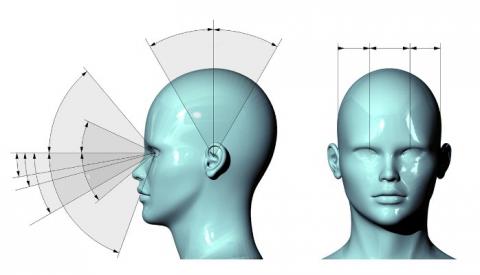What We See is How We See: Humans as Fractals
Jul 15,2016
In Chapter 3 of Visual Thinking: For Design, Colin Ware states the following:
The up-down direction and the sideways direction are special. They are perceived differently from each other and from other orientations. We are very sensitive to whether something is exactly vertical or horizontal and can make this judgment far more accurately than judging if a line is oriented at forty-five degrees. The reason for this has to do with two things: one is maintaining our posture with respect to gravity; the other is that our modern world contains many vertically oriented rectangles and so more of our pattern-sensitive neurons become tuned to vertical and horizontal contours. This makes the vertical and horizontal organization of information an effective way of associating a set of visual objects.
In other words, humans are extremely aware of perfectly upright (or perfectly level) lines, and are much more adept at inferring perfect verticality or horizontality than inferring whether or not something is tilted at a specific angle (e.g., 30 degrees). This is because A) humans are, at all times, maintaining proper vertical stance in defiance of gravity, and B) our society is permeated with upright quadrilaterals, therefore the human ability to sense pattern is calibrated in accordance with perfectly erect—or perfectly horizontal—forms.
Humans deal with misalignments every day, and, quite often, are forced to realign them. Interestingly, this constant struggle seems to mimic the structure of the brain’s processing. According to a recent article called “Findings From Memory Research Continue to Fascinate” by the National Institute On Aging, “neurons communicate with each other by means of slender extensions” that shoot out “from the body of the cell,” and “these structures are separated by a microscopic gap called a synapse;” in order for the brain to function, “signals move across this gap by chemical messengers called neurotransmitters.”
Perhaps human vision is so tuned to misalignment because of this way the brain’s interpretation of vision occurs; every single neuron in a portion of the brain—the entirety of which contains an astounding 100 billion neurons—must be superbly aligned in order for that part to function, and neurons must also (to some extent) even come into contact with each other during this process: a feat made all the more amazing considering that neurotransmitters and receptor fields are only a few molecules wide.
In a sense, overall human processing is fractalized. Internally, the brain can only function when the most important parts are perfectly aligned, and externally, the body requires near-perfect alignment of certain elements for various activities to be successful. (Eating requires that the path of food aligns with the path of the throat, excreting waste requires aligning one’s rear end with a toilet, and sex is self-explanatory.)
Even beyond our external world our desire for alignment holds true. Distant planetary bodies spark our interest most when things overlap one another, and we have even crafted an entire field of science dedicated to calculating planetary alignments and trajectories.
This obsession is why implied line is so pleasing to the eye. Human life necessitates manipulation of non-aligned elements, and people are almost always working to ‘fix’ these pesky occurrences. It makes sense that, when faced with a non-malleable design (e.g., the ink on a print-out), we enjoy the fact that it does not change, that certain elements remain aligned yet untouching, that it remains that way without falling due to gravity.
After all, in everyday life—away from design—we rarely encounter this type of thing.





